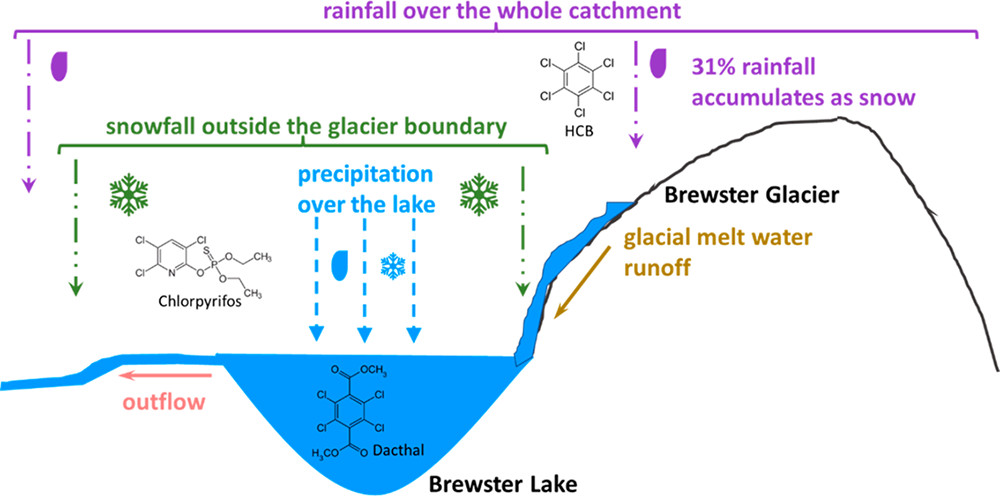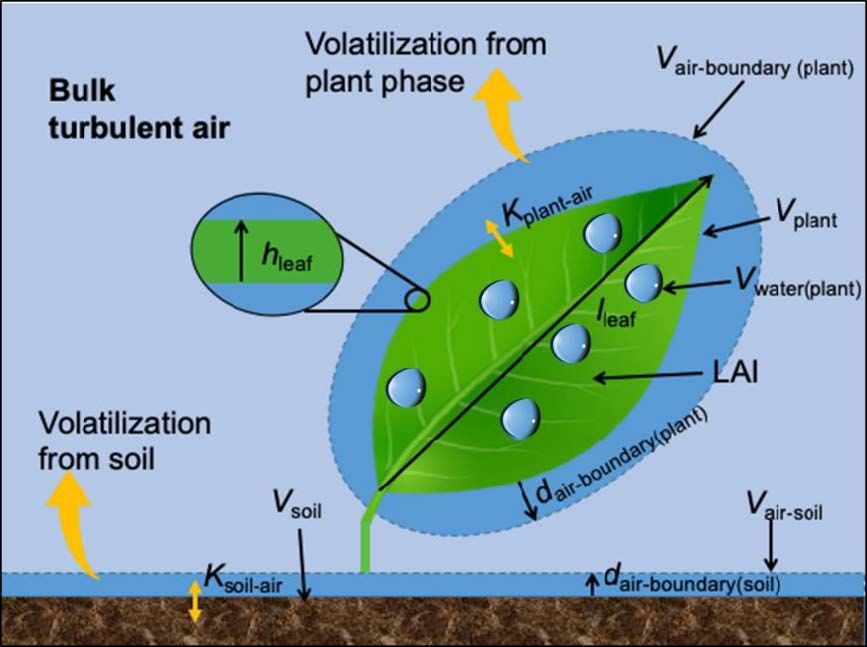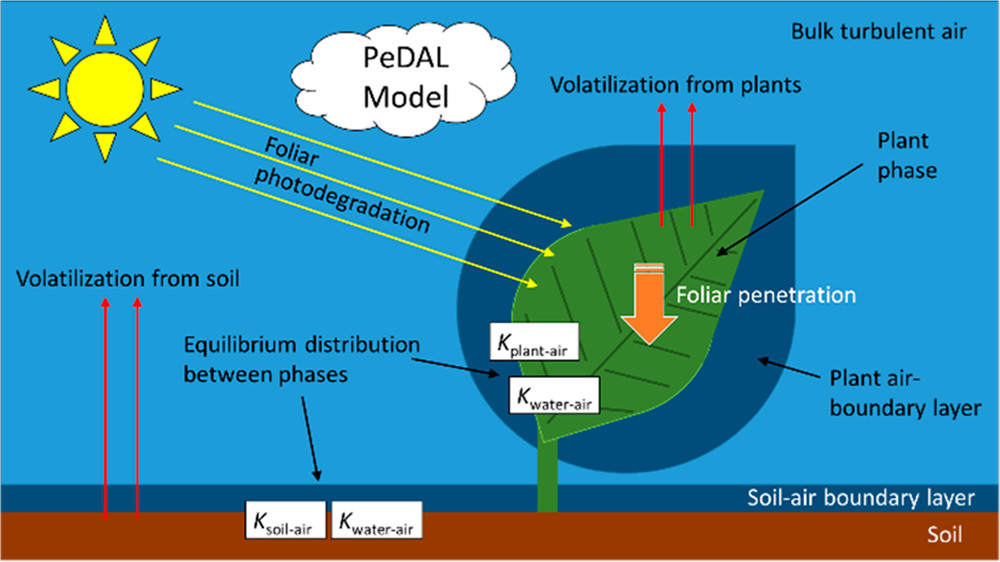OVERVIEW
We are developing chemical fate models and web tools to address the fate and behavior of organic contaminants in the environment. See associated publications for more information and details about each model. These tools are available for use by others through this website.
ACCESSING THE MODELS
A password will be needed to run these models. To obtain such a password, please e-mail Kim and briefly describe who you are and what you want to use the model for. You will then be given a unique username and password with which you will be able to access the models.
💎GLACIER-FED LAKE MODEL <LINK TO WEB MODEL>
Glacier meltwater can be an important source of organic contaminants to downstream lakes. A non-steady state model, GLACIER-FED LAKE MODEL, was developed to predict contaminant concentrations in a multi- environmental glacier-fed lake. The model allows users to better understand the influence and contributions of the glacial melt and stream water to the downstream lake. It can also predict the concentrations under future climate scenarios with the combination of changes in temperature, glacial melt runoff, and precipitation.
A detailed description of GLACIER MODEL is provided in Xiaolin Wu, Cleo L. Davie-Martin, Christine Steinlin, Kimberly J. Hageman, Nicolas J. Cullen, Christian Bogdal. Environ. Sci. Technol. 2017. https://doi.org/10.1021/acs.est.7b03483

💎PLoVo MODEL (Version 2) <LINK TO WEB MODEL>
The Pesticide Loss via Volatilization (PLoVo) model was developed to predict and understand pesticide volatilization rates from a planted agricultural field. The model allows the user to adjust properties of the pesticide, various soil and plant descriptors, and climatic conditions. A useful output from the model is the 24-h cumulative percentage volatilization (CPV24h) loss. The PLoVo model version 2 has a number of modifications compared to the version 1 (Cleo L. Davie-Martin, Kimberly J. Hageman, and Yu-Ping Chin. Environ. Sci. Technol. 2013, 47, 868−876). The second version adds a plant compartment and now is capable of predicting the volatilization from plants and/or soil.
A detailed description of PLoVo model version 2 is provided in Madeleine Taylor, Sean M. Lyons, Cleo L. Davie-Martin, Trudyanne S. Geoghegan, Kimberly J. Hageman. Environ. Sci. Technol. 2020, 54, 4, 2202-2209. https://doi.org/10.1021/acs.est.9b04762

💎PeDAL MODEL (Version 3)
The Pesticide Dissipation from Agricultural Land (PeDAL) model is the third version of our pesticide fate model, which was designed to simulate pesticide dissipation following application to a cropped field. This version contains modules for pesticide volatilization from plants and soil (which is included in the PLoVo MODEL), photodegradation on leaf surfaces, and penetration into leaves. In addition to predicting pesticide dissipation, the PeDAL model can be used to estimate an emission flux which can then be used in atmospheric transport models and can be used to examine aspects of pesticide dissipation such as the impact of application timing. In the future, toxicity thresholds will be incorporated into the model in order to inform applicators on how long the pesticide will remain effective as well as when it safe to introduce beneficial insects.
A detailed description of PeDAL model is provided in Sean M. Lyons and Kimberly J. Hageman. Environ. Sci. Technol. 2021, 55 https://doi.org/10.1021/acs.est.0c07722

💎MARINE ECOSYSTEM MODEL <LINK TO WEB MODEL>
COMING SOON